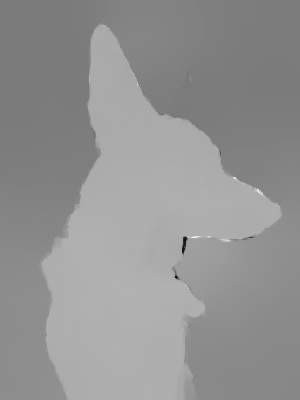
Unlike most phones released these days, Apple’s new iPhone SE has just one 12-megapixel rear camera lens. But it turns out that one camera is still pretty good, at least in well-lit situations, my colleague Dieter Bohn found in his iPhone SE review.
For portrait photos, the iPhone SE’s camera uses machine learning to estimate depth of field, and Ben Sandofsky, one of the developers of mobile photography app Halide, took a closer look at how at how portrait photos taken by the SE’s single camera actually work.
The key feature of the iPhone SE’s portrait mode is that can do something called “monocular depth estimation,” which is enabled by the iPhone SE’s A13 Bionic processor (the same processor in the iPhone 11 and 11 Pro). That processor and the depth estimation allows the phone capture depth maps for photos differently than, say, the iPhone XR, which also has a single lens. Sandofsky found that the SE could even estimate depth for flat photos.
In one example, Sandofsky took a picture of this photo with an iPhone XR and an iPhone SE:
:no_upscale()/cdn.vox-cdn.com/uploads/chorus_asset/file/19929453/1_UpqpyTDmqL0cWRPozCeXhw.jpeg)
In this image slider, you can see how the two phones estimated depth. The iPhone XR’s depth map is on the left, and the iPhone SE’s is on the right.
The iPhone SE’s depth map isn’t a perfect representation of the actual depth of the scene by any means, but pretty darn cool that the SE can estimate the actual depth of a flat photo entirely using machine learning.
I highly recommend taking a few minutes to read Sandofsky’s blog in full. He goes into a lot more detail about how the SE’s camera captures depth, and has a bunch more examples of its depth mapping in action — including one example where it finds depth in a 50-year old slide film of his grandmother!
And check out Dieter’s review if you want to see more of his thoughts about the SE’s camera.
Author: Jay Peters.
Source: Theverge





